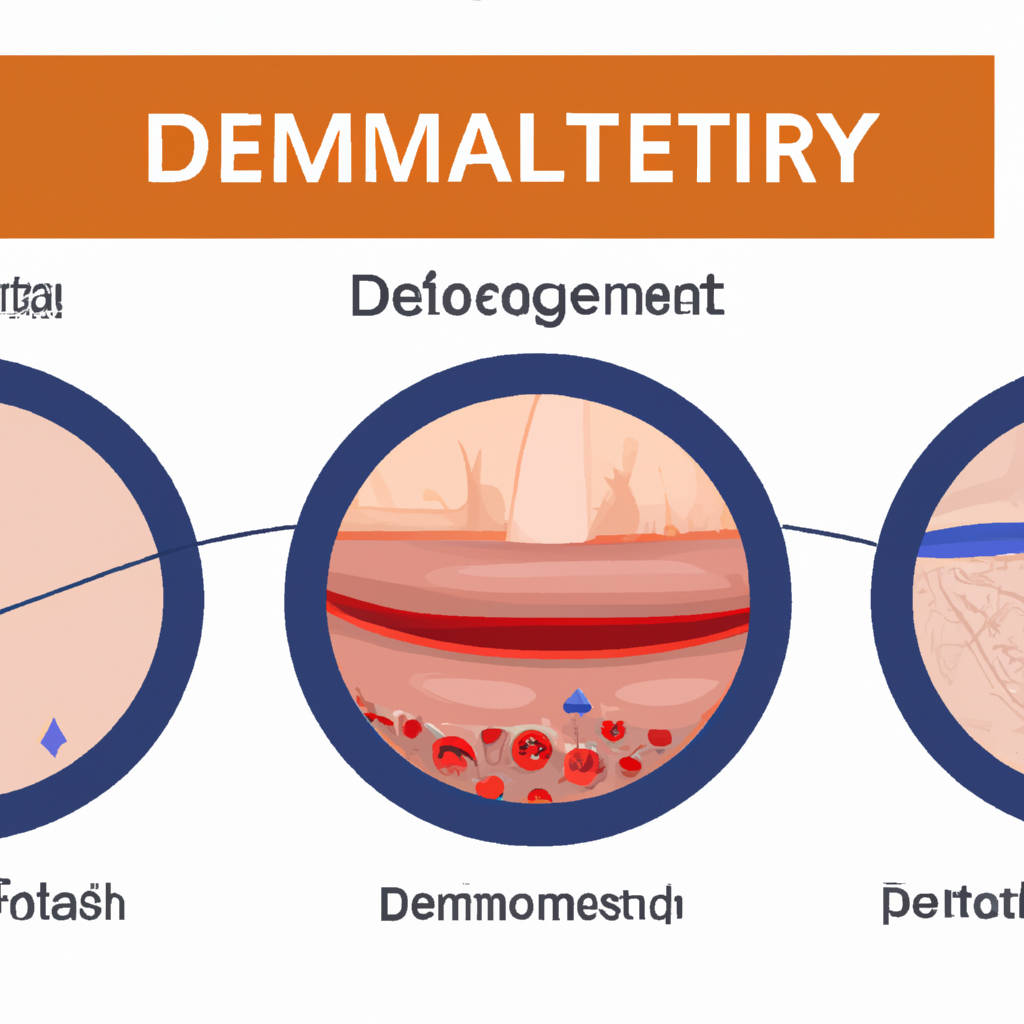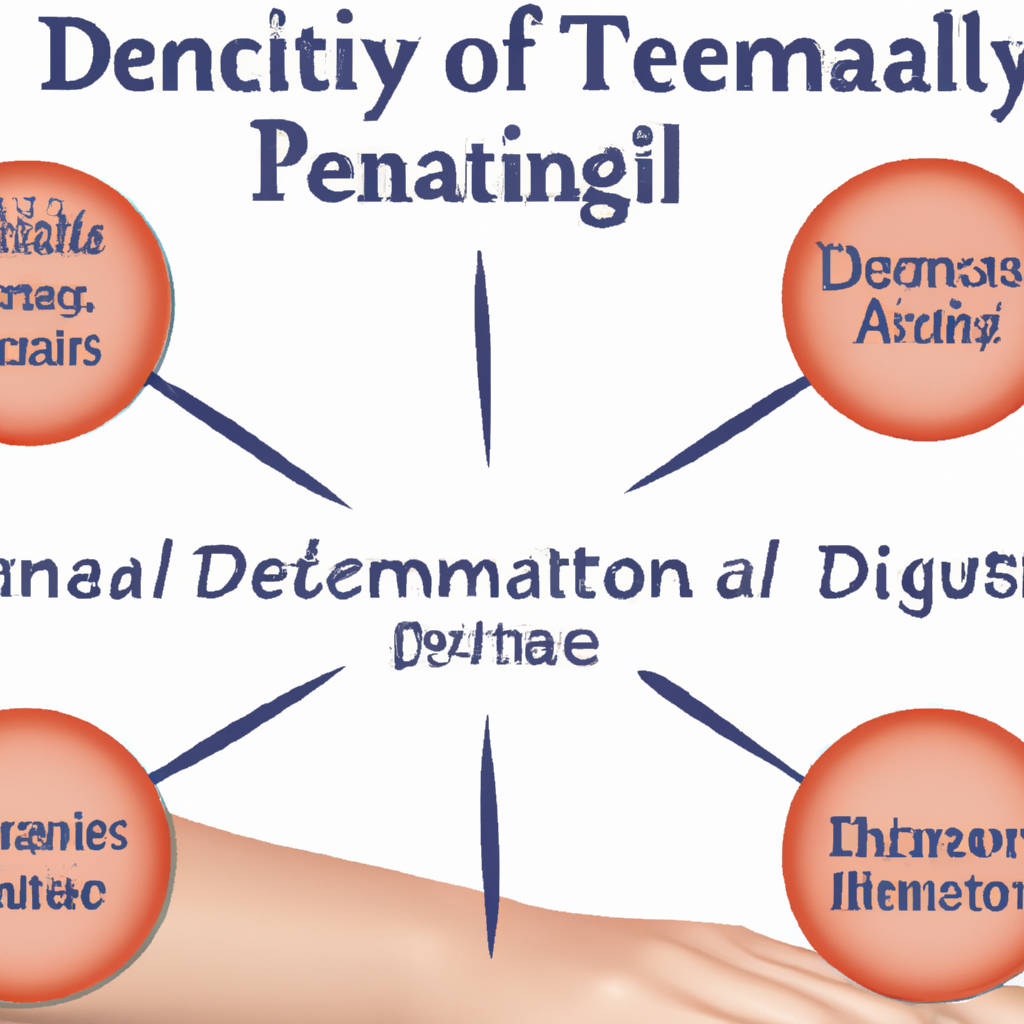Perioral Dermatitis is a common skin condition that primarily affects the facial area around the mouth, and occasionally, the areas around the eyes or nose. This condition manifests itself in the form of small, red, bumpy rashes or pustules that may cause mild itching or a burning sensation. It is often mistaken for acne or eczema due to the similar visual appearance. The exact cause of Perioral Dermatitis is unknown, but factors such as hormonal changes, topical corticosteroids, fluoride toothpaste, and certain cosmetics have been linked to it.
Effective treatments for Perioral Dermatitis vary based on the severity of the condition and individual patient characteristics. Topical antibiotic creams or gels, oral antibiotics, and topical calcineurin inhibitors are among the most commonly prescribed treatments. It is essential to follow a healthcare provider’s instructions during the treatment phase, as improper use of medications or abrupt discontinuation may lead to a relapse of the condition.
Prevention measures for Perioral Dermatitis primarily involve maintaining a consistent skincare routine and avoiding known triggers. Individuals with this condition should use mild, fragrance-free facial cleansers and moisturizers, avoid heavy or oily makeup products, and refrain from using fluoridated toothpaste if it is identified as a trigger. It is also recommended to reduce or eliminate the use of topical corticosteroids unless directed by a healthcare provider.
While Perioral Dermatitis can be frustrating to deal with, understanding its symptoms, effective treatments, and prevention measures can significantly aid in managing the condition. Regular follow-ups with a dermatologist or a healthcare provider are crucial to monitor the condition’s progress and adjust treatments if necessary. Though it may take some time to find the most effective treatment and prevention strategies, with patience and persistence, individuals with Perioral Dermatitis can achieve clearer, healthier skin.

Symptoms of Perioral Dermatitis: Recognizing the Signs
Perioral Dermatitis is a skin condition that typically manifests around the mouth, but it can also affect the nose, eyes, or even the genitals. Recognizing the signs of this inflammatory rash is crucial to seeking timely treatment. The primary symptom of perioral dermatitis is a cluster of small, red, or pink bumps, which can sometimes be filled with fluid or pus. These bumps are often accompanied by a burning or stinging sensation, and the skin around them might appear dry, flaky, or scaly.
Apart from the physical discomfort, these symptoms can also cause emotional distress due to their appearance. The condition might also cause the skin to feel tight or uncomfortable, and in some cases, the affected area might even peel or flake. Furthermore, the symptoms can worsen under certain conditions, such as exposure to sunlight, heat, or certain skincare products.
While perioral dermatitis can occur in anyone, it’s more common in women aged between 16 and 45 years. However, even children can develop the condition. The cause of perioral dermatitis is still unclear, but it’s believed to be linked to the overuse of topical corticosteroids, certain dental products, or skincare products containing petroleum or paraffin. It’s also associated with hormonal changes, stress, or certain types of birth control pills.
Though perioral dermatitis is not life-threatening, it can be quite bothersome, and if left untreated, the symptoms can last for months or even years. Therefore, if you notice the aforementioned signs, it’s advisable to seek medical help. A dermatologist can diagnose the condition through a physical examination and provide appropriate treatment options, which might include topical or oral antibiotics, or changes to your skincare routine. In addition to the treatment, it’s also beneficial to identify and avoid triggers that might worsen the symptoms, such as certain skincare products, stress, or excessive sun exposure. By recognizing the signs of perioral dermatitis and seeking timely treatment, you can effectively manage the condition and prevent further flare-ups.
Causes of Perioral Dermatitis: Understanding Triggers
Perioral dermatitis is a skin condition that causes a rash around the mouth, and at times, it may also extend up towards the nose or even down to the chin. The exact cause of this skin disorder remains unknown, however, certain triggers have been associated with the onset of the condition. Among these triggers are topical steroid creams, which, when applied to the face, may result in an outbreak. Furthermore, certain cosmetic products such as make-up, moisturizers, or sunscreen containing high levels of chemicals can induce this skin condition. Toothpastes containing the ingredient fluoride have also been linked to the development of perioral dermatitis.
In addition to the above-mentioned external triggers, internal factors such as hormonal changes, particularly those occurring due to oral contraceptives or during pregnancy, can also provoke this skin condition. Stress and a compromised immune system can also play a part in triggering perioral dermatitis. Dietary factors may also contribute to the condition with certain foods causing inflammation and subsequently leading to perioral dermatitis. Examples of such foods include those high in sugar, processed foods, and dairy products.
Understanding these triggers is crucial for managing the condition. By identifying and avoiding these triggers, individuals with perioral dermatitis can help control their symptoms and prevent flare-ups. It’s important to note that triggers can vary from person to person, thus, what may cause an outbreak in one person may not have the same effect in another. Therefore, individuals with this condition are encouraged to monitor their symptoms and identify their own personal triggers. Understanding and managing triggers, along with proper skin care and treatment, can greatly assist in controlling perioral dermatitis.

Treatment Options: Medications and Therapies
The landscape of medical treatment options is vast and complex, spanning across a multitude of medications and therapies designed to address various health conditions and improve the overall quality of life for patients. Medications, which encompass a wide array of substances like antibiotics, antivirals, analgesics, antipyretics, and many more, are often the first line of defense in treating illnesses. They work in numerous ways, such as killing bacteria, reducing inflammation, relieving pain, or controlling chronic conditions. The effectiveness of these medications largely depends on the individual’s unique physiology, the nature and severity of the ailment, and the prescribing physician’s expertise.
On the other hand, therapies offer a different kind of healing approach. They can be physical, such as physiotherapy and occupational therapy, or psychological, like cognitive-behavioral therapy and psychotherapy. These therapies often aim to rehabilitate, enhance function, and improve mental well-being. They can be employed as standalone treatments or in conjunction with medications for a more holistic approach to healthcare.
Moreover, alternative therapies like acupuncture, homeopathy, and naturopathy have grown in popularity, offering unique treatment options that veer away from conventional medical practices. The choice between medications and therapies, or a combination of both, should be carefully considered, taking into account the potential benefits, risks, and side effects.
Likewise, advancements in biotechnology have led to the development of revolutionary treatments, such as gene and cell therapies, which can potentially cure genetic and degenerative diseases.
In addition, personalized medicine, which tailors treatment plans based on an individual’s genetic makeup, is paving the way for more effective and safer treatment options. Therefore, navigating through the vast array of treatment options requires a collaborative effort between the patient and healthcare provider to ensure the most optimal and effective treatment plan is utilized.
Overall, the realm of treatment options, encompassing medications and therapies, is continually evolving, offering innovative solutions to address health concerns and improve patient outcomes.
Skincare Tips: Managing Symptoms at Home
Skincare management at home is crucial in maintaining a healthy and vibrant complexion. This process involves various practices that can soothe, rejuvenate, and protect your skin. One of the essential steps is cleansing. It’s important to cleanse your skin at least twice a day to remove grime, dirt, and excess oils. However, it’s critical to avoid harsh cleansers that can strip your skin of its natural oils. Opt for gentle, hydrating cleansers that will clean without causing dryness or irritation.
Another vital skincare tip involves moisturizing. Even if your skin is oily, it still requires hydration. Invest in a quality moisturizer that suits your skin type, and ensure to apply it daily. Don’t forget to moisturize your neck, as the skin there is delicate and often overlooked.
Exfoliation is also an essential part of any skincare routine. It helps to remove dead skin cells leaving your skin looking brighter and feeling smoother. However, be careful not to over-exfoliate, as this can lead to skin damage. Aim to exfoliate once or twice per week, depending on your skin type.
Sun protection is a must for managing skincare symptoms at home. Too much exposure to the sun’s harmful ultraviolet rays can cause premature aging, skin discoloration, and even skin cancer. Therefore, it’s essential to apply sunscreen with an SPF of at least 15 every day, even when it’s cloudy.
Lastly, maintaining a healthy diet rich in fruits, vegetables, and plenty of water can have a significant impact on your skin’s health. Foods high in antioxidants can fight off free radicals that cause skin damage, while adequate hydration can keep your skin supple and radiant.
In sum, managing skincare symptoms at home involves a balanced combination of proper cleansing, moisturizing, exfoliating, sun protection, and a healthy diet. By adopting these practices, you can achieve and maintain a beautiful, healthy complexion.
Prevention Strategies: Reducing the Risk of Recurrence
Recurrence prevention strategies aim to diminish the likelihood of a condition or situation reoccurring, thereby enhancing an individual’s quality of life. These strategies can be applied to various areas, ranging from health to environmental preservation. In health, for instance, once a patient recovers from a certain disease, preventive measures are put in place to reduce the risk of the disease recurring. These measures may include lifestyle changes, medication, regular check-ups, and follow-up care. For environmental preservation, continuous efforts are made to maintain the eco-balance and prevent further degradation. This might involve sustainable practices, recycling, and conservation efforts. It is important to note that these strategies should be personalized, based on the specific situation and individual needs. They should also be dynamic, allowing for necessary adjustments over time.
This flexibility ensures that the strategies remain effective in the face of changing circumstances. Additionally, preventive measures should not be viewed as a one-time event but rather as a continuous process, requiring commitment and consistency. Ultimately, the goal of recurrence prevention strategies is to provide long-term solutions, which necessitates a proactive approach and continuous evaluation and improvement. Furthermore, awareness and education about these strategies are crucial for their successful implementation. Only when individuals understand the importance of these strategies will they be motivated to adopt them. Therefore, investment in education and awareness campaigns is key to reducing recurrence risks. In conclusion, prevention strategies are invaluable in minimizing the risk of recurrence, whether that be in health, environmental conservation, or any other field. Their successful implementation requires a comprehensive and dynamic approach, backed by consistent commitment and continuous improvement.
When to See a Dermatologist: Seeking Professional Help
Recognizing the appropriate time to see a dermatologist is essential in maintaining healthy skin and addressing any potential skin conditions early on. Dermatologists are medical professionals who specialize in diagnosing and treating skin, hair, and nail-related issues. It’s crucial to seek their professional help when over-the-counter products are not alleviating your skin concerns. This could include persistent acne, dry skin, eczema, or other long-term skin problems that do not improve with over-the-counter treatments. Additionally, sudden changes in your skin, like unexplained rashes, new moles, or changes in existing moles, should prompt immediate consultation with a dermatologist. These could indicate more serious conditions, including skin cancer.
It’s also advisable to see a dermatologist for routine skin checks, especially if you have a history of sun exposure or skin cancer in your family. Regular screenings can aid in early detection and treatment. Furthermore, if you’re considering cosmetic procedures, a dermatologist can provide expert advice and perform safe, professional procedures. They can guide you through the process, explaining potential risks, benefits, and alternatives. Likewise, if you are experiencing hair loss, a dermatologist can help determine the cause and suggest appropriate treatment options. Lastly, if you have a skin condition that is affecting your self-esteem or quality of life, a dermatologist’s input can be invaluable. They can provide effective treatments and advice to manage such conditions, helping you regain confidence and live a more comfortable life. Therefore, understanding when to seek professional help from a dermatologist is vital for both preventative care and treating existing conditions.